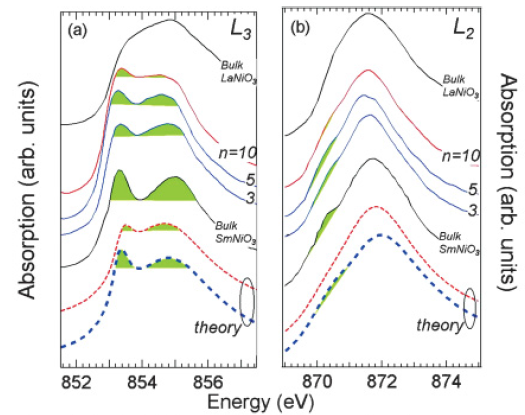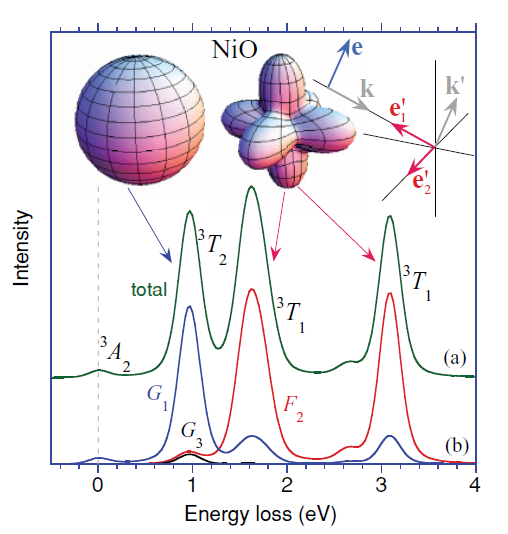| Highlights |
|
Quantum confinement of Mott electrons in ultrathin LaNiO3/LaAlO3 superlattice J. Liu, S. Okamoto, M. van Veenendaal, M. Kareev, B. Gray, P. Ryan, J. W. Freeland, and J. Chakhalian, Phys. Rev. Rapid Commun. 83, 161102 (2011) (Editor’s Selection). We investigate the electronic reconstruction in (LaNiO3)n/(LaAlO3)3 (n =3, 5, and 10) superlattices due to the quantum confinement (QC) by dc transport and resonant soft x-ray absorption spectroscopy. In proximity to the QC limit, a Mott-type transition from an itinerant electron behavior to a localized state is observed. The system exhibits tendency toward charge-order during the transition. Ab initio cluster calculations are in good agreement with the absorption spectra, indicating that the apical ligand hole density is highly suppressed, resulting in a strong modification of the electronic structure. At the dimensional crossover cellular dynamical-mean-field calculations support the emergence of a Mott insulator ground state in the heterostructured ultrathin slab of LaNiO3. |
|
Observation of dd excitations via 4p-3d Coulomb scattering in transition-metal K-edge resonant inelastic x-ray scattering M. van Veenendaal, X. Liu, M. H. Carpenter, and S. P. Cramer, Phys. Rev. B. 83, 045101 (2011). The presence of dd excitations in K-edge resonant inelastic x-ray scattering in the 1s → 4p region of transition-metal compounds and their excitation mechanism is established through measurements of NiO and NiCl2. It is demonstrated that the valence excitations are due to the interaction between the excited 4p electron and the 3d valence electrons. A detailed analytical framework for interpreting these excitations in transition-metal compounds is presented, demonstrating a strong angular dependence for different dd excitations. |
|
Resonant inelastic x-ray scattering studies of elementary excitations In the past decade, Resonant Inelastic X-ray Scattering (RIXS) has made remarkable progress as a spectroscopic technique. This is a direct result of the availability of high brilliance synchrotron X-ray radiation sources and of advanced photon detection instrumentation. The technique's unique capability to probe elementary excitations in complex materials by measuring their energy-, momentum-, and polarization-dependence has brought RIXS to the forefront of experimental photon science. We review both the experimental and theoretical RIXS investigations of the past decade, focusing on those determining the low-energy charge, spin, orbital and lattice excitations of solids. We present the fundamentals of RIXS as an experimental method and then review the theoretical state of a affirs, its recent developments and discuss the different (approximate) methods to compute the dynamical RIXS response. The last decade's body of experimental RIXS data and its interpretation is surveyed, with an emphasis on RIXS studies of correlated electron systems, especially transition metal compounds. Finally, we discuss the promise that RIXS holds for the near future, particularly in view of the advent of x-ray laser photon sources. |



